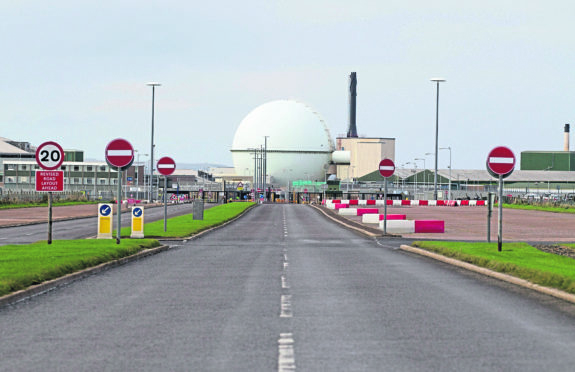An investigation has been launched after a lightning strike knocked out power at the Dounreay nuclear plant and its back-up supplies also failed.
Safety fears were raised last night as details about the incident on June 17 this year emerged for the first time.
The Press and Journal has learned that disruption caused by a nearby lightning strike led to a “loss of grid” at the complex in Caithness – and that was followed by a “failure of back-up power supplies”.
It meant that for about one hour there was no power for vital safety systems which monitor radiation and ventilation.
It was the second safety issue at the site in the space of 10 days, after radiological contamination was found on the hand and shoe of a worker at the plant near Thurso on June 7.
Work was temporarily halted at Dounreay after the discovery, although the levels of contamination detected were found to be “very low”.
Following the lightning strike, which was not a “direct hit” on the facility but somewhere else on the local network, nuclear regulators said they believed “adequate contingency arrangements” were in place at the site and that it was “satisfied that these were implemented effectively”.
However, Scottish Greens MSP John Finnie said last night that such incidents could have serious consequences.
The Highlands and Islands representative said: “The weather in Scotland is increasingly disruptive to our infrastructure, as evidence of the climate emergency becomes more and more obvious.
“But when that infrastructure is the containment of deadly radioactive material, we need to take these incidents extremely seriously.
“Radioactive waste was disposed of at Dounreay for decades, and even after closure will remain deadly beyond the timescale of any containment measures yet invented.
“Even if this investigation finds no risk this time, the incident shows yet again nuclear power is neither safe, clean, cheap nor low-carbon and leaves an open-ended legacy of serious environmental risk.”
Last night, a spokesman for the Office for Nuclear Regulation (ONR) said: “As the investigation is still ongoing, we unable to provide any comment at this time.”
A spokeswoman for site operators, Dounreay Site Restoration Limited (DSRL), said: “During adverse weather in June, electricity supply issues in the local area affected Dounreay and there was short loss of supply to the site.
“The site’s incident control centre was set up and there was no risk to people or the environment. Regulators were informed.”
It is understood that once the DSRL investigation into the lightning strike has been completed, the ONR will review the evidence and then decide if follow-up action is required.
Built in the 1950s to push forward the UK’s nuclear energy ambitions, radioactive waste was disposed of at Dounreay from 1959 until an explosion in the shaft ended the practice in 1977.
Decommissioning the site by 2033 is viewed as one of the most complex closure programmes in Europe.
In January 2011, scaffolding erected around a building in the facility’s high-security fuel cycle area was hit by lightning, affecting some monitoring and telemetry systems.
The operators insisted at the time that the incident had not compromised safety at the cluster of fuel and waste plants, and no injuries were reported.
